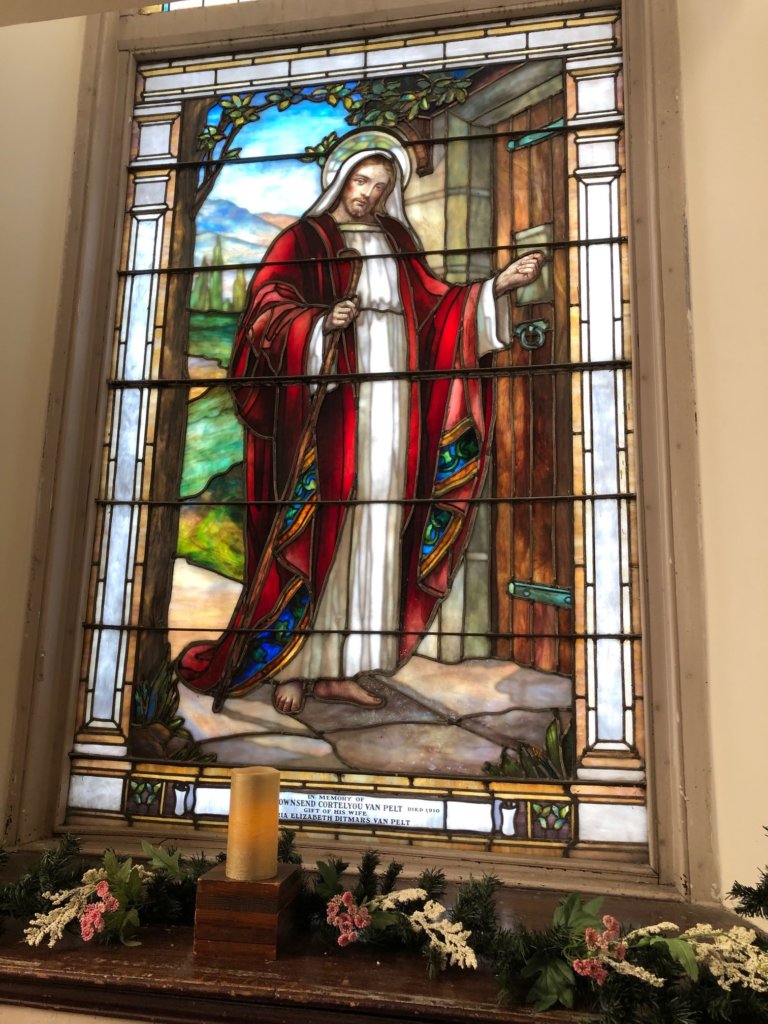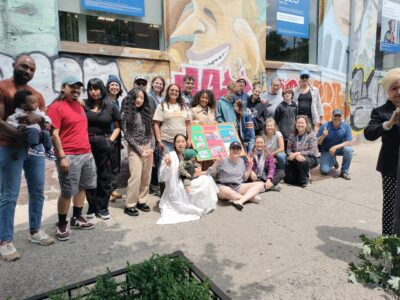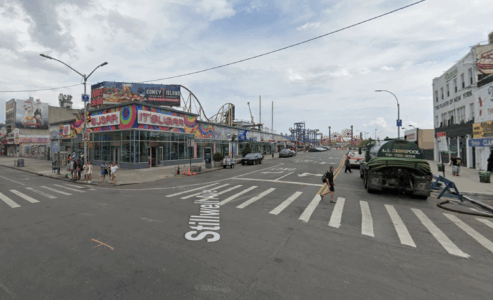Susan Hanyen was like a proud parent as she welcomed visitors to an open house at the New Utrecht Reformed Church in Bensonhurst on Saturday, May 18.
“We’re so grateful that our beautiful church has reopened and we’re able to be here and talk to good folks who want to come inside and see it,” she told this newspaper.
Hanyen, vice president of the church’s consistory, or governing body, was among the congregation members who hosted a steady stream of visitors to the historic old church, which was constructed in 1828. The Georgian-Gothic church held its first Sunday service in 1829 in what was then the town of New Utrecht. The town was founded by Dutch settlers in 1652.
In 2003, the church was closed to undergo a series of repairs stemming from decades of damage. It remained shuttered for 15 long years. The church finally reopened in December of 2018 to the great relief of its congregation members and the wider Bensonhurst community.
Located at 8301 18th Ave., the New Utrecht Reformed Church was one of 14 historic religious institutions in Brooklyn that opened its doors during the May 18-19 weekend as part of “Sacred Sites Open House,” an event sponsored by the New York Landmarks Conservancy to celebrate the unique architecture and living history the buildings represent.
Hanyen, a life-long member of the congregation, said the interior of the church remains largely unchanged from when it first opened 190 years ago, with one major exception. A gallery was installed around the time of the Civil War to accommodate a growing congregation. “They needed more room so they built a gallery,” she said.
Another congregation member, Pam Anders, gave visitors a guided tour of the sanctuary and allowed a reporter the chance to sit in the gallery to take in the view.
The stained glass windows that line the sides of the building are notable for the nameplates at the bottom, which reveal that the windows were erected thanks to generous donations from families with names that would be familiar to Brooklyn residents like Cortelyou and Cropsey.
The window depicting Jesus Christ, for example, has a name plate to inform viewers it was erected in memory of Townsend Cortelyou Van Pelt (1837-1910) and was a gift to the church from his wife, Maria Elizabeth Ditmars Van Pelt.
The church’s main floor consists of rows and rows of white wooden pews, each with its own door and door lock. In the old days, families would buy pews so that they and their loved ones would be guaranteed a place to sit on Sundays. The sale of pews was also done to raise money for the church, according to Dave Elligers, a member of Friends of Historic New Utrecht.
Elligers gave a lecture on the church’s history in the parish house, a building located on church property that was constructed in 1892. Among the items on display was a contract from 1830 showing the sale of Pew No. 55 to Marie Cropsey Bennett. She paid $65.
Elligers also unearthed a contract from 1828 for masonry work to be done for the church’s construction. The mason was paid $1 per 25 cubic foot.
Two prominent congregation leaders, James Cropsey and Major Rene Edward De Russy, oversaw the construction of the church. De Russy, a West Point graduate, had fought in the War of 1812. Strangely, there is no architect listed on any of the documents, Elligers said.
The 18th Avenue church is not the original church. The first New Utrecht Reformed Church was located on what is now the corner of 16th Avenue and 84th Street and opened in 1700.
The only thing remaining from the original church is a metal weather vane in the shape of a rooster. “It has bullet holes from the Revolutionary War,” said Elligers.




 Sunset Park residents look to form new mural at 54th Street
Sunset Park residents look to form new mural at 54th Street  Man charged with attempted kidnapping after allegedly grabbing six-year-old in Coney Island
Man charged with attempted kidnapping after allegedly grabbing six-year-old in Coney Island